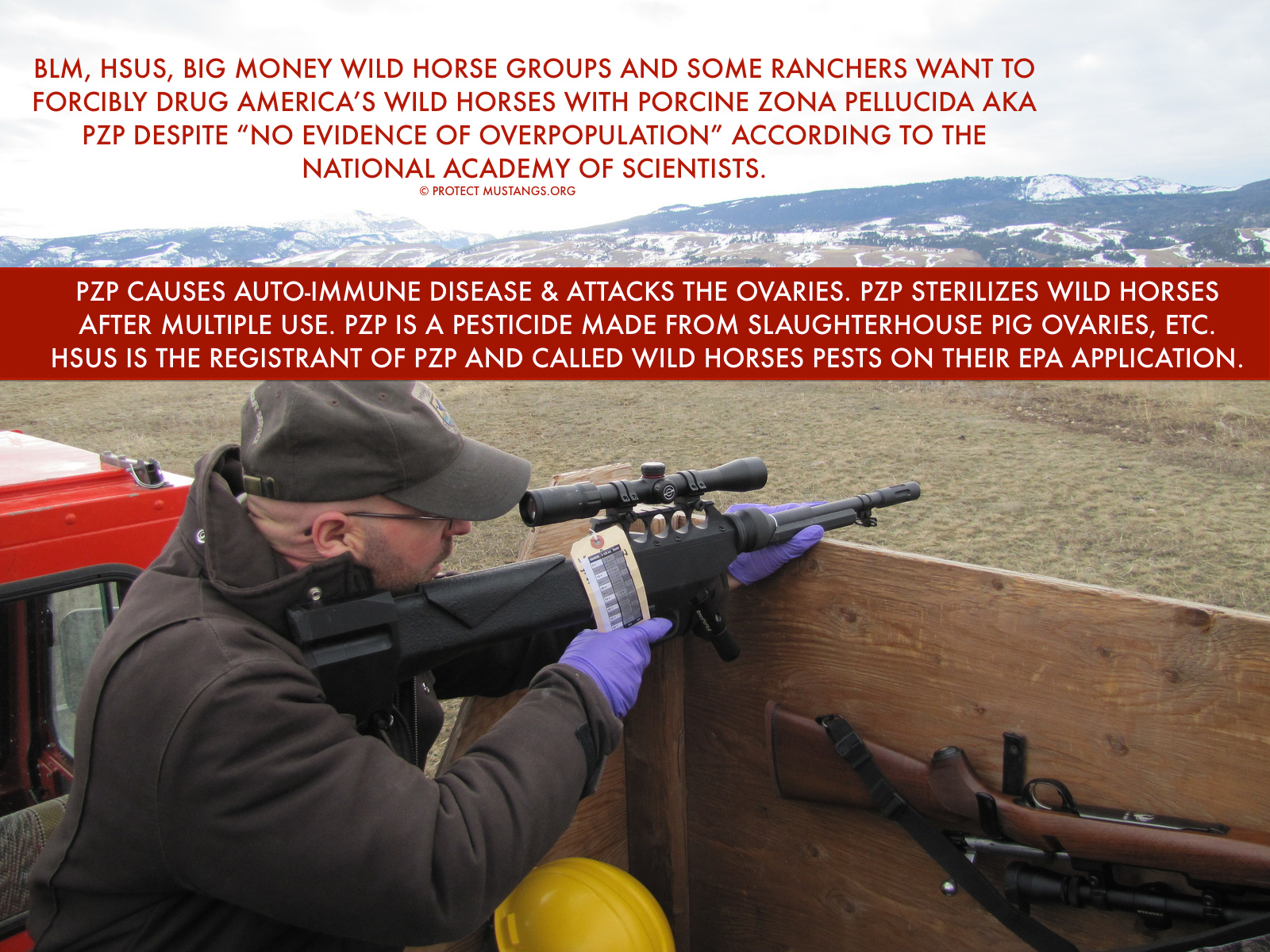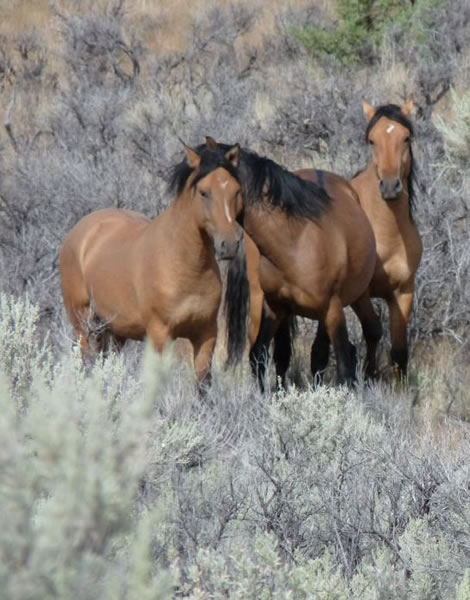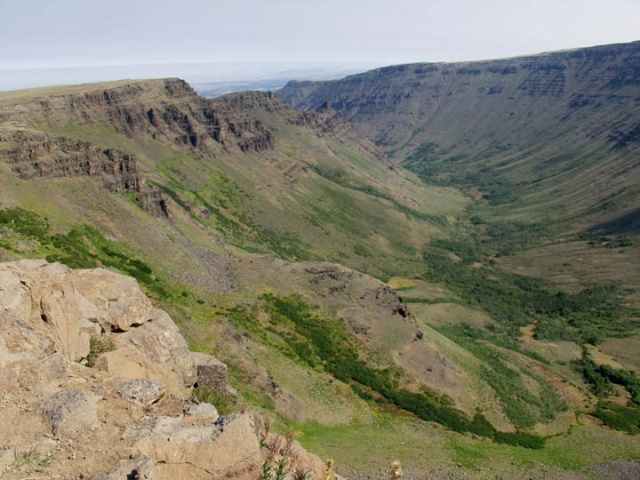Sun Devil 92
Diamond Member
- Apr 2, 2015
- 32,078
- 11,107
- 1,410
- Banned
- #61
Isn't this the same government whose dick Spitting Bull is constantly sucking on ?
Follow along with the video below to see how to install our site as a web app on your home screen.
Note: This feature may not be available in some browsers.
Simply bullshit, Longknife. The horses died the same way most of the North American mega-fauna died. And we are still not sure of the primary cause. During the depths of the last glaciation, we had a far richer variety of large mammals than have existed in North America for the last ten thousand years. Something we need to understand better.C'mon all you bleeding hearts. Get real.
There have no real wild horses in North America for tens of thousands of years.
The Prehistoric Horses of North America
They could not adapt to the land as it changed. Then, Man comes along and reintroduces them to the Americas where they soon compete with other, better adapted creatures.
They simply breed too fast and there are too many of them for nature to support. Would you let them starve or die in these spaces where they roam? Or would you do the humane thing and put them out of their pain?
Well, there are ranchers that feel they own that land. But that is not the primary reason for the killing of the wild horses. You see, that area, which I know very well, has been in drought for a long time. The horses are overgrazing the land.Living here in tamed Midwest, I get a good feeling knowing there are wild mustang.roaming the west. Why are they considered a nuisance? Is it because they are grazing on Federal land that partly belongs to me and not just the ranchers out there?
You're running. It seems like it's been days … and it has. You're strong and powerful but your legs hurt so badly because you've been running for what seems like forever. You can barely catch your breath. You're trying to protect your baby, as well, but she can barely keep up and is stumbling on her brand new legs. But the predators are literally on your tail. You're being chased by those who intend to inflict harm, so you keep on running. You're in a panic. You're frantic. You're hungry, you're thirsty, but you can't stop. If you stop, they catch you. And when they catch you, it's over.
This is the life of wild horses today. The mustangs.
Our great mustangs descended from Spanish horses and were brought here in the 16th century by Spanish explorers. Their name in Spanish, mustengo, means "stray horse."
Just last month the Bureau of Land Management (BLM) completed a roundup of roughly 1,400 wild horses in Oregon in Beaty's Butte, historically known as the area of the Kiger mustangs.
According to a Pacific Standard report, there were five deaths on November 19, including "one 8 year old mare with old break in right hind leg and one 4 month old colt with old break in left hind leg." Two days later, 16 horses were dead. According to another report published in the same article, "The most heartbreaking [scene] of the day involved the foals. The helicopters are running these horses from very long distances, and often foals just can't keep up for as long as the rest of their herd."
What we once considered an American icon is now fodder for the latest cull by government entities. It seems nothing is sacred these days, even a beautiful part of our history.
When we hear that dogs are culled in Asian countries for fear of rabies, we rant and rave and express our disgust. Yet here in our very own country we are culling the last of our great wild horses, and our rants and raves seem to fall on deaf ears.
The horse has a long and integral part in the history of the U.S., which was founded on the backs of these great icons, as they helped pioneers settle the West. After being brought here by the Spaniards, the mustangs were used by Native Americans for a variety of tasks such as transportation. They were revered for their "fantastic stamina and speed," while their stocky legs made them perfect for long hauls.
Where once 2 million wild horses roamed in the 19th century, according to an article referencing Western writer J. Frank Dobie, "by the time the wild horse received federal protection in 1971, it was officially estimated that only about 17,000 of them roamed America's plains. More than 1 million had been conscripted for World War I combat; the rest had been hunted for their flesh, for the chicken feed and dog food companies, and for the sport of it."
In response to public outrage over the horses' annihilation, the 1971 Wild Free-Roaming Horse & Burro Act was passed, protecting wild horses from capture and death. The BLM and the U.S. Forest Service were responsible for implementing the act and ensuring protections were in place for the wild horses while they also issued grazing permits to cattle ranchers on public land.
While they were once considered iconic and majestic, wild horses are now deemed nothing more than a nuisance by ranchers who use federal land for subsidized grazing. And we've let them down. Big time.
The kill buyers don't hide, according to Meagher. "There is nothing illegal in what they are doing. It's immoral, but it's not illegal. It is legal to buy horses here and transport across country lines" to sell to slaughter.
We owe our wild horses so much more than extinction.
To find out more about protecting and helping our wild horses, visit American Wild Horse Preservation, International Society for the Protection of Mustangs and Burros, and The Humane Society of the United States.
More: Why Is The Government Killing The Last Of Our Wild Horses?
This is really sad. Cattle ranchers pushing iconic and majestic wild horses off government grazing lands. So now they're just a nuisance and sold to slaughter. Damn, that is really sad.
If you wish to contact President Obama:
President Barack ObamaPetitions: Take action today to stop roundups and mustang slaughter!
The White House
1600 Pennsylvania Avenue NW
Washington, DC 20500
Email: president@whitehouse.gov
Phone: 202-456-1111

Protect Mustangs™
Their shit is full of methane. We can't have that.
Much less than cows grazing on our taxpayer-owned public lands.
Every little shit hurts ( cue the crying Indian )
Kiger horses are from S. Oregon.


This is where they're trying to survive.
Kiger horses are from S. Oregon.


This is where they're trying to survive.
Check out where these wild horses 'Pocahontas' claims are being killed are located.
Exactly! Some fuck-wit took Kigers from the environment they has adapted to over hundreds of years and set them down in the fucking desert!Kiger horses are from S. Oregon.


This is where they're trying to survive.
Check out where these wild horses 'Pocahontas' claims are being killed are located.
They are sill an "invasive species" that were never bred to adapt to the climate. Beautiful horses though @ Kiger Mustang - Wikipedia, the free encyclopedia
Selling the meat to Japan...in exchange for Cuban cigars.Why Is The Government Killing The Last Of Our Wild Horses?
Good question. Why is the Obama administration slaughtering these animals?
Why Is The Government Killing The Last Of Our Wild Horses?
Good question. Why is the Obama administration slaughtering these animals?
That's really messed up, I agree with you. Wild horses should be protected.
They represent freedom.That's really messed up, I agree with you. Wild horses should be protected.
Why? They aren't a native species. Nor are they endangered.
Really, do a little research before posting something like that. The Kigers probably were in Southeastern Oregon before white men arrived. They descended from horses that the Spanish brought over and that escaped into the wild.Exactly! Some fuck-wit took Kigers from the environment they has adapted to over hundreds of years and set them down in the fucking desert!Kiger horses are from S. Oregon.


This is where they're trying to survive.
Check out where these wild horses 'Pocahontas' claims are being killed are located.
They are sill an "invasive species" that were never bred to adapt to the climate. Beautiful horses though @ Kiger Mustang - Wikipedia, the free encyclopedia
Yes beautiful horses. We had a couple which had been breed to Belgium rhones on the farm.
Problem was if they weren't handled every day they would go wild. Getting them rideable after winter was a job of work.
Kiger Mustangs, kiger mustang history


This is where they're trying to survive.


You're running. It seems like it's been days … and it has. You're strong and powerful but your legs hurt so badly because you've been running for what seems like forever. You can barely catch your breath. You're trying to protect your baby, as well, but she can barely keep up and is stumbling on her brand new legs. But the predators are literally on your tail. You're being chased by those who intend to inflict harm, so you keep on running. You're in a panic. You're frantic. You're hungry, you're thirsty, but you can't stop. If you stop, they catch you. And when they catch you, it's over.
This is the life of wild horses today. The mustangs.
Our great mustangs descended from Spanish horses and were brought here in the 16th century by Spanish explorers. Their name in Spanish, mustengo, means "stray horse."
Just last month the Bureau of Land Management (BLM) completed a roundup of roughly 1,400 wild horses in Oregon in Beaty's Butte, historically known as the area of the Kiger mustangs.
According to a Pacific Standard report, there were five deaths on November 19, including "one 8 year old mare with old break in right hind leg and one 4 month old colt with old break in left hind leg." Two days later, 16 horses were dead. According to another report published in the same article, "The most heartbreaking [scene] of the day involved the foals. The helicopters are running these horses from very long distances, and often foals just can't keep up for as long as the rest of their herd."
What we once considered an American icon is now fodder for the latest cull by government entities. It seems nothing is sacred these days, even a beautiful part of our history.
When we hear that dogs are culled in Asian countries for fear of rabies, we rant and rave and express our disgust. Yet here in our very own country we are culling the last of our great wild horses, and our rants and raves seem to fall on deaf ears.
The horse has a long and integral part in the history of the U.S., which was founded on the backs of these great icons, as they helped pioneers settle the West. After being brought here by the Spaniards, the mustangs were used by Native Americans for a variety of tasks such as transportation. They were revered for their "fantastic stamina and speed," while their stocky legs made them perfect for long hauls.
Where once 2 million wild horses roamed in the 19th century, according to an article referencing Western writer J. Frank Dobie, "by the time the wild horse received federal protection in 1971, it was officially estimated that only about 17,000 of them roamed America's plains. More than 1 million had been conscripted for World War I combat; the rest had been hunted for their flesh, for the chicken feed and dog food companies, and for the sport of it."
In response to public outrage over the horses' annihilation, the 1971 Wild Free-Roaming Horse & Burro Act was passed, protecting wild horses from capture and death. The BLM and the U.S. Forest Service were responsible for implementing the act and ensuring protections were in place for the wild horses while they also issued grazing permits to cattle ranchers on public land.
While they were once considered iconic and majestic, wild horses are now deemed nothing more than a nuisance by ranchers who use federal land for subsidized grazing. And we've let them down. Big time.
The kill buyers don't hide, according to Meagher. "There is nothing illegal in what they are doing. It's immoral, but it's not illegal. It is legal to buy horses here and transport across country lines" to sell to slaughter.
We owe our wild horses so much more than extinction.
To find out more about protecting and helping our wild horses, visit American Wild Horse Preservation, International Society for the Protection of Mustangs and Burros, and The Humane Society of the United States.
More: Why Is The Government Killing The Last Of Our Wild Horses?
This is really sad. Cattle ranchers pushing iconic and majestic wild horses off government grazing lands. So now they're just a nuisance and sold to slaughter. Damn, that is really sad.
If you wish to contact President Obama:
President Barack ObamaPetitions: Take action today to stop roundups and mustang slaughter!
The White House
1600 Pennsylvania Avenue NW
Washington, DC 20500
Email: president@whitehouse.gov
Phone: 202-456-1111

Protect Mustangs™

They represent freedom.
For the first, and probably last time, Im going to agree whi Lakotah on something. The are majestic animals with a history and background thst is pRt of whst made America what it is today.
These animals should be treasured by the American people, not abused and slaughtered by our Government. BLM needs to get their shit straightened out and pit the needs of these animals above the desires of ranchers, on Federal land. The US Government has already wiped out or nearly done so to at least 2 other breeds of horses because of their association with native tribes. To lose the Mustang as well would be a disgrace of rpic proportions.
but the government gets paid for thatTheir shit is full of methane. We can't have that.
Much less than cows grazing on our taxpayer-owned public lands.